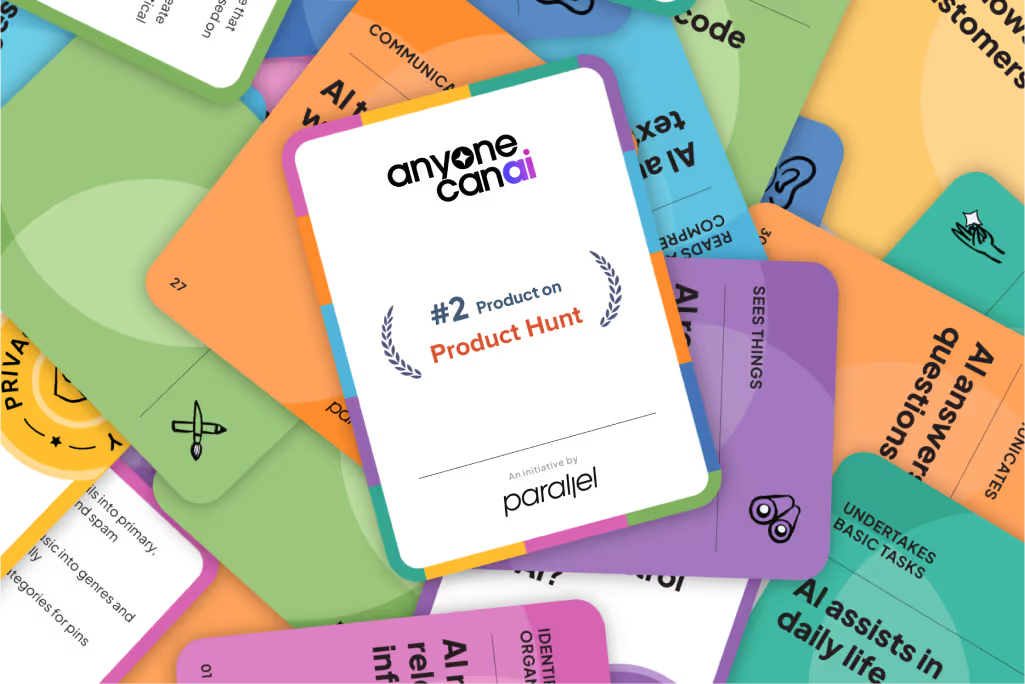Why Design Sprints Work
From "This is not going to work!" to "Why didn't I know about this before?" — here's my journey from disbelief to being an evangelist of Design Sprints.

The first time I noticed the word Design Sprints was on Parallel's website.
Actually, it's interesting how I began working with Parallel. Robin, the founder of Parallel, was conducting a Design Sprint for Niti Aayog and IDinsight, and I was asked to join as an expert. I was a little skeptical that workshops lead to anything, so I only committed to joining for a few hours, rather than the entire workshop.
After the workshop, I was still skeptical. I wasn't sure how this team would create a prototype for such a complex product, with three different user personas and multiple use cases — this would ideally take months.
But, to my surprise, they came up with a prototype in just a week's time, and it worked really well for all user flows. And I thought, the process works!
You don't believe until you see it.
However, I wasn't a firm believer in Design Sprints until I participated in one.
My first Design Sprint was for another government app that needed major rework. I was worried about whether we would be able to deliver on our promise in a week's time. That's right, we decided to completely revamp a G2C (Government to Citizen) app in a week... And boy, we did it!
After the design sprint, the government officers were speechless. I was a little afraid of whether they would appreciate what we did to redesign the app, but they were completely on board.
To my surprise, Design Sprints work in all settings. I've spent some time thinking about it, and here's my analysis of why Design Sprints actually work:
All the stakeholders in one room.
We don't start our sprints unless we have everyone, from senior officers to developers, in the room. At times, that's meant delaying a sprint by 2 weeks, but having everyone's opinions is what makes Design Sprints work. If we miss out on people and their perspectives, we are setting ourselves up for failure.
Clients as experts.
We might know design, but domain expertise lies with our clients — and we just don't say that, we mean it. Design Sprints make sure that everyone is creating ideas and sharing them, and that's their recipe for magic! For example, in one sprint, one of the developers actually suggested one of the defining features of the app, and we would have never thought of it ourselves.
Getting started > being right.
Design Sprints often use a "note and vote" exercise to ensure that we don't get lost in a sea of ideas and instead come down to a decision quickly. For example, in one sprint, most client team members were very excited about adding a location feature in the app. However, when we gave them limited votes, most members didn't vote on that feature as there were more fundamental things to fix. Forceful prioritization helps create a tangible roadmap.
Together, alone.
In Design Sprints, rather than generating ideas through group discussions, everyone does individual work and then brings it together. This helps teams create lots of ideas, but then quickly align on the right one.
Focus on the users.
Every debate in a Design Sprint ends with what is best for the users. We can agree to disagree, but we always get to an answer by putting the spotlight on users.
Everything is time-boxed.
Before we start a workshop, we fix the final presentation time. We know we have a week to deliver, no more or less, and so we plan to create something that can actually be delivered in a week's time. This means no useless research, no silly experimentation. With limited time, every session and exercise becomes precious, which helps us focus on pushing ourselves. But this doesn't mean overworking, just focusing on creating quality output in the time we've allotted.
Developer's mindset.
Design sprints work because they also keep the developers in mind. Sprint facilitators (like us) usually have experience in coding, and so we realize if something will be hard to implement, we take that idea off the shelf. This keeps work practical and helps get our clients' leapfrog journeys started ASAP.
Thinking of innovating and getting started, but don't know what to do? Try a Design Sprint!
Have you tried one already? How did it go? Let us know in the comments.
And, as I say these days, the magic lies in the process. 🙂










.avif)


